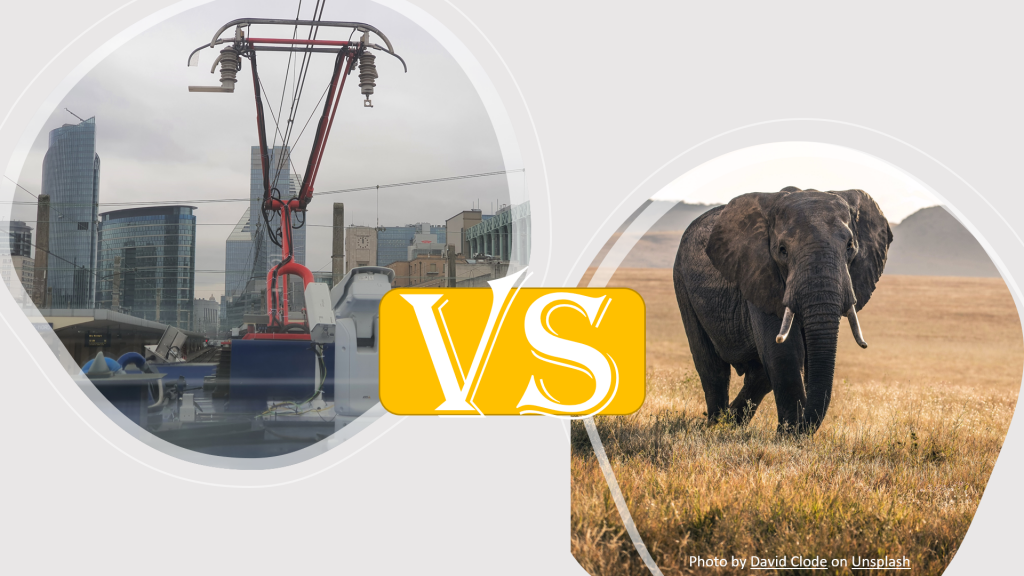Pantographs and Elephants are both interested in “Infrasounds”, 0.5-20 Hz. Elephants can communicate using very low-frequency sounds, with pitches below the range of human hearing. These low-frequency sounds, termed “infrasounds,” can travel several kilometres, and provide elephants with a “private” communication channel that plays an important role in elephants’ complex social life. Their frequencies are as low as the lowest notes of a pipe organ [1].
The frequency range of interest for pantograph-catenary interaction is the frequency range within which the dynamic performance of the overhead contact line – pantograph system is considered [2]. According to BS EN 50317:2012, Measurements of the applied force and the measured force shall be taken at frequencies from 0,5 Hz up to 20 Hz in 0,5 Hz steps, with reduced intervals at resonant frequencies. The sampling rate shall be greater than 200 Hz for time sampling or smaller than 0,40 m for distance sampling.
It seems the Elephants can hear the problems in the performance of pantograph and catenary much better than any human.
PANTOhealth technical team decided to convert the measured signal from the accelerometers installed on a pantograph to audible sound with a focus on the infrasound. In our measurement, the sampling frequency was 400 s/s. Resampling the main signal with higher frequency (44.1 kHz) will convert the signal audible without any focus on the interested frequency range. The result is available here (better to here via a stereo earphone).
the simplest way to mack the low frequency audible is playing the signal fast. but in this case, the correlation between video and sound will be missed. therefor we decided to break the signal to 0.1s time windows, then repeat each window 14 times, and play the signal with 14x speed. In order to avoid the jump in the signal, the time windows have been reversed every other. It makes the colour noise of 140 Hz in the result, but besides that, the frequencies 2-20 Hz are projecting to 28-280 Hz which is totally audible.

The result is available (better to hear via a stereo earphone).
PANTOhealths approach is to and translates the vibration of train and infrastructure as much as possible. This approach will help the technicians and maintenance providers to understand the condition of the asset correctly and suggest the best maintenance act at the best time.
